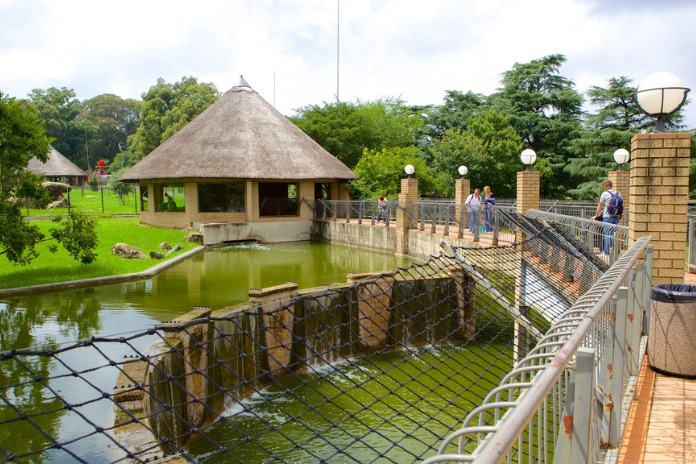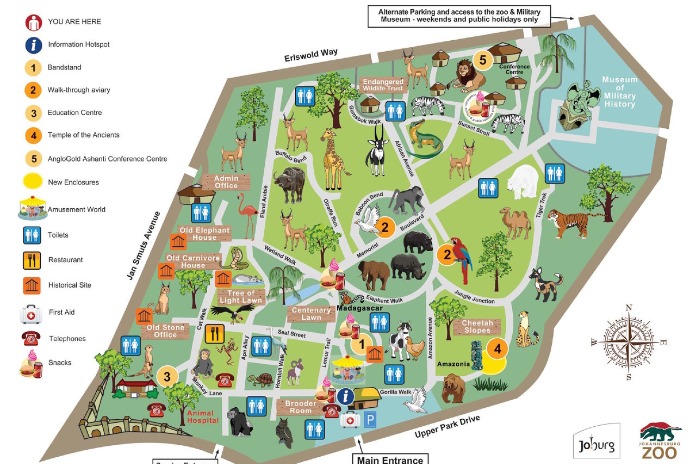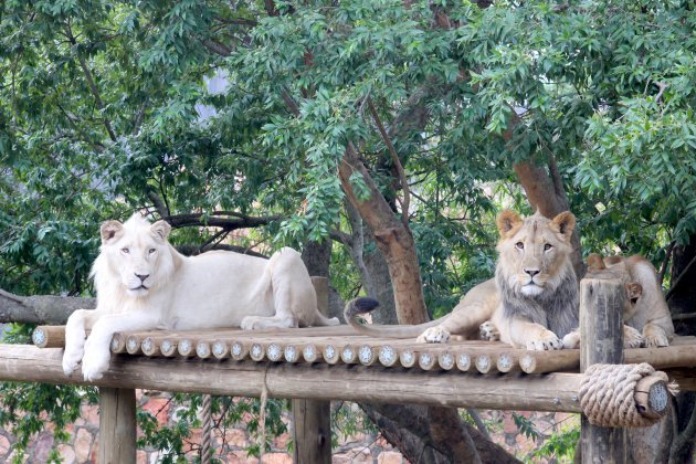If you live in South Africa and you’re yet to visit the Johannesburg Zoo, then it is something you should absolutely consider. The zoo is endowed with some of the best animal species like the largest cats globally – the Siberian Tigers – and over 300 different species of other animals. Tourists who intend to visit South Africa for a vacation should also consider having the Johannesburg zoo on their list of places to go to. The entrance fee and other costs you may have to incur are very affordable for adults and children.
It is a norm that before visiting a place, you make inquiries. This is why we have taken time to put down everything you need to know about the Johannesburg Zoo – the entrance fee, the kind of animals they have, and all other recreational activities that you can have fun doing at the zoo – aside from playing with the animals. So if you want to visit the zoo and wish to know more about it, you should stick with this post to the end.
Johannesburg Zoo Entrance Fee Is Very Affordable
The Johannesburg Zoo is an amazing place to visit for both adults and children. The Zoo is opened all days of the week and runs throughout the year, so you do not have to worry about visiting on the wrong day. But to enjoy all the fun and get the best view of nature and African wildlife, you will have to pay some rands as a gate fee, and this fee differs for both adults, children, students, and pensioners.
| Category | Entrance Ticket Fee |
| Adult | R100 |
| Children | R60 |
| Students | R65 |
| Pensioners | R60 |
As a student, if you wish to pay R65, then be sure to come to the zoo with a valid students’ ID card, as that will serve as proof that you are actually a student. Also, you must keep in mind that from 4 pm, sales of entrance tickets will be closed, so do well to come on time to get your ticket early and also to make the best of it, before the zoo closes for the day.
What Is The Best Time To Visit The Zoo?
Like you already know, the Johannesburg Zoo is open for the entire 365 days in the year, but their operating time is from 8:30 am – 5:30 pm every day. While it is just fine to visit the zoo at any time within their operating hours, you should visit when the animals have been feed.
This is because it is this time that the animals, which are the major point of attraction, will be active and willing to engage with visitors. Here is a list of the feeding time of different animals – it may guide you on when to visit the zoo, depending on the animals you will love to spend more time admiring and playing with:
| Animals | Feeding Time |
| Cheetahs |
12:15 am |
| Wild Dogs | 12:15 am |
| Ground Hornbills | 11:15 am |
| Gorillas | 2 pm |
| Chimpanzees | 10 am |
| Crocodile | 1 pm (during summer) |
| Vultures | Fed for public view on Sundays by 11 am |
But then, if you will love to see when the animals are feed and how they eat, it is fine to visit in the morning by 8:30 am, especially if you have dedicated your entire day to having fun at the Johannesburg Zoo.
What Animals Does The Johannesburg Zoo Have?
According to Wikipedia, the Johannesburg Zoo houses 320 species, which include 101 species of mammals (lions, monkeys, gorillas, etc.), 128 species of birds, 20 species of frogs, 5 species of spiders, 47 species of reptiles (crocodile, snakes, etc.), and 25 kinds of fish. Here is a list of animals that you will find at the zoo:
- Gorilla
- Polar Bears
- Zebra
- Chimpanzee
- Leopard
- Lion
- Wild Dog
- Lemur
- Monkeys
- reptiles (crocodile, frogs, etc.)
- Baboons
- Giraffe
- Rhino
- Gorilla
- Bengal Tiger
- Crocodile
- Elephant
- Pigmy Hippo
- Games (Antelope, Eiland, Kudu, and others)
How Do I Get To The Johannesburg Zoo?
If you own a car, you can turn on your Goggle map on your smartphone and clock in where you are in South Africa, and the map will direct you to the zoo. The zoo also has a parking lot where you can park your car with some level of safety while you are inside the zoo for a fee.
- For cars – R15
- Buses – R25
In 2017, the management of the zoo replaced its parkade with a new parkade worth R45 million. The new parkade has the capacity to accommodate 700 cars and 15 buses, so you shouldn’t be worried about getting a space to park your vehicle as there is enough space for all.
If you intend to come with your friends and family members who also own cars, you all can make arrangements to come in the same vehicle as that may save you some extra change. Whether you have a car or not, you can also visit the Johannesburg Zoo by train. If you are anywhere around the Rosebank Station, the Gautrain runs multiple times from the Rosebank station to the zoo.
Aside From The Animals, What Else Can You Do At The Johannesburg Zoo?
Although the animals may be the major attraction when visiting the zoo, there are many other activities and side attractions that you may find fascinating. Some of these include:
Visiting the Moyo Zoo Lake
The Moyo zoo lake is just opposite the zoo. The lakeside is just the perfect place to sit while you enjoy the beautiful view of nature. Around the lakeside, you will find restaurants dedicated to serving special African delicacies that you can fill your stomach with while appreciating nature at its finest.
The best time to visit the lake is in the afternoon – after you have spent some time with the animals in the zoo in the morning. Although the lake is usually opened from 8 am – 11 pm daily, Buffetts are usually served from 8:30 am – 11 am for breakfast and 12 pm – 4 pm for lunch every Saturday, Sunday, and public holidays. The lake is located at 1 Prince of Wales Drive, Parkview, Johannesburg.
Take Part In The Zoo Trot
Every second Sunday of the month, the Johannesburg Zoo hosts a zoo trot that allows visitors to take a walk, stroll, or run around the zoo through different animal enclosures. The zoo trot usually costs R5 per person, and you can choose to walk or run for 5km or 10km. To get the best out of the Trot, wear very comfortable shoes. For more inquiries about the zoo trot, you can call 011 712 6817.
Be Part Of The Educational Centers
The Johannesburg Zoo also has educational centers where visitors can visit to learn more about the animals. During these training sessions that are carefully done and supervised by an expert animal handler, the visitors will have the opportunity to come close to the animals they are learning about.
These sessions are usually worth the time and do not have fees attached to them. So if you visit the zoo, it’s something you should spend some time doing. To get the best out of each training session, it is advised that you research about the animals first; this way, you can flow with what the trainer is saying.
Join The Gajiga Run
Every second Sunday of the month, the Johannesburg Zoo holds a Gajiga Run, where visitors can run through the zoo from 5 pm to 8 pm. This is a very awesome experience as you get to see the zoo from a different perspective at night.
It is no news that predators are most active at night, and their eyes are built to see clearly even in the dark and glitter in the cover of darkness. This may make the experience really daring, but not to worry, the animals are in their enclosures, and you will be safe.
To ensure safety, runners are mandated to wear and put on their headlamps immediately it gets to 6 pm, as darkness will begin to cover at this time. Running does consume a lot of energy, so to replenish that energy and keep you active till the end of the run, you will get a nourishing beverage halfway into the run, and when you reach the finish line, you get a goodie bag.
The Gajiga Run is not a free activity; for all the fun and goodies, you will have to pay a fee of:
- R250 – Adults (Early Birds)
- R300 – Adults
- R100 – Children (within the age of 5 – 15 years)
- R30 – Spectators
- Free – Children under the age of 5
Visit The Reptile House
The reptile house is a new closure in the Johannesburg Zoo that contains many cold-blooded reptiles that you will love to see and have a close view of. If you have a phobia for reptiles, it is not a place to go to because the house contains wild reptiles like Green Mamba, Dwarf Crocodiles, venomous Puff Adder. But always remember that the zoo operators have your safety in mind, and you don’t have to be afraid. Just don’t engage in any unsafe activities as the animals are wild.
The Farm Yard
The Farm Yard is another amazing place to visit when you go to the Johannesburg Zoo. Wild animals are not the only type of animals you can find in the zoo as the Farm Fard houses friendly animals like sheep, who you are allowed to feed. These animals are so friendly that they do not mind eating out of your hands. They also love it when children give them attention.
Before you feed any animal at the Farm Yard, be sure to ask the animal handler for advice on how to go about it to avoid getting into an accident of any kind with the animals. Because the fact that the animals are friendly does not mean they cannot hurt humans if agitated.
Animals Of The Amazon
Another amazing activity you can engage in at the Johannesburg Zoo is to see exhibits of the animals of the Amazon. This exhibit was created in 2014 and houses some of the creepiest reptiles and amphibians in Africa.
If you intend to invite the zoo and have the best time of your life during your visit, you should consider giving up your entire day because the zoo has many animals and fun activities that are enough to keep you engaged throughout the day.
Other Fun Facts About The Zoo
Here are some of the amazing things about the Johannesburg Zoo that you should know:
- The first animals in the zoo were a donation from Percy Fitzpatrick.
- The zoo’s first animal enclosures were two lions and a leopard.
- The zoo houses the largest cats in the world, the Siberian Tigers.
- Twist, one of the Siberian Tigers in the zoo, is the father of all Siberian Tigers in South Africa.
- The Johannesburg Zoo is over 100 years old.
- Max, the gorilla, was one of the most famous animals in the zoo before being killed in 2004 by a criminal called Mofokeng who committed a crime close to the zoo and ran into Max’s enclosure while running away from the police.
- Max, the gorilla, has a Wikipedia page to his name and has his statue in the zoo.
- The Johannesburg Zoo is so big that you could spend your entire day working through it and may need the zoo’s map to navigate through it.
The Johannesburg Zoo Was One Of The Few Places Blacks and Whites Could Visit During The Apartheid
The 140 acres of land on which the Johannesburg Zoo sits today initially belonged to Hermann Eckstein, who actually purchased the land to explore it for the presence of natural minerals. When he did not find any, he decided to use the land for a timber plantation in 1981. He was a great conservationist, and his passion for preserving nature made him plant over 3 million trees.
In 1903, the land that has become what you see as the Johannesburg Zoo, Zoo Lake, and South African National Museum of Military History was donated to the Johannesburg government to be used for recreation. By March 1904, it was handed over to Johannesburg Town Council before Sir Percy Fitzpatrick began sourcing for animals for the zoo, donating his own collection of wildlife to become the first animals in the zoo. And with two lions and one leopard, the zoo kicked off.
Due to the Deed of Gift under which the Johannesburg Zoo and Zoo Lake were acquired, they were one of the few places in South Africa that black and white South Africans could stay without segregation. After the Apartheid, the zoo was now poorly managed by the government, and in a bid to preserve it, it was corporatized to Johannesburg Zoo Company in 2002, with the Johannesburg Town Council being the major shareholders.
Today, the zoo is now registered as a member of local and international breeding programs and houses over 300 species. As of 2019, the Johannesburg Zoo receives about 515,623 visitors a year, and if you are not part of the number, it is about time you start planning a visit to the zoo. As big as it is, it is not as big as the Pretoria Zoo, which is the largest in South Africa and one of the top 10 largest zoos in the world.





